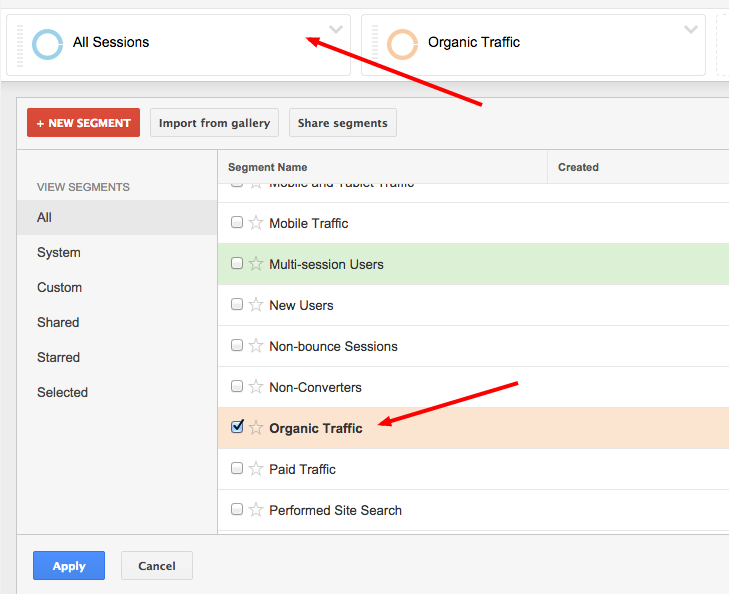How to Keep Ranking with Google’s Mobile Algorithm Update

We’ve all been there….
You sit comfortably on the couch with TV playing in the background.
A smartphone in hand, you flick through search results looking for that fancy new gadget, shoes, or anything else really.
You notice a listing promising what you’re looking for, click it and…
Land on a page you actually can’t view on your phone.
Damn!
Mobile traffic is on the rise.
According to IBM, it already surpassed desktop traffic over the last year’s Thanksgiving weekend (source).
And mobile usage already exceeded desktops, too.
But so is mobile search.
It comes as no surprise then that Google starts to consider the needs of mobile users as more important than those of desktop.
It started off by displaying a mobile friendly label in search.
Then Google began experimenting with mobile friendliness as a ranking factor.
And now the search engine announced that starting today (April 21st) it will begin “expanding our use of mobile-friendliness as a ranking signal”.
The announcement further explains:
“When it comes to search on mobile devices, users should get the most relevant and timely results, no matter if the information lives on mobile-friendly web pages or apps. As more people use mobile devices to access the Internet, our algorithms have to adapt to these usage patterns.”
This means that as of April 21st, unless your store is optimized to work on mobile devices, it might no longer rank in mobile search.
Let’s see what you could do to ensure that this won’t happen.
Step 1. Test your store’s mobile friendliness
The first thing you need to do is to find out if your site passes the Google’s mobile friendliness criteria.
There are 4 ways to test that:
Mobile-Friendly Test
This Google’s tool allows you to test pages of your site for mobile friendliness.
One thing to remember though is that the tool does not work on a site basis. Instead it analyzes individual URLs only. This means that to test the entire site, you need to run each page separately through the tool.
The good news is that most online stores are template-based. Testing one template (i.e. product page) should be enough to establish if all pages created with it pass the test.
Page Speed Insights Tool
Page load time is an important aspect of Google’s algorithm. It’s no surprise that it will play a significant role in the mobile algorithm as well.
This tool will give you an indication of your site’s speed on mobile devices. It will also recommend things to fix if there are any.
Google Webmaster Tools Mobile Usability Report
This tool can notify you of any mobile related issues on your site.
Google has been sending mobile issues notifications through Google Webmaster Tools. So chances are if there are any problems with your site, they will appear there.
Do a “site:” search on your mobile
Lastly, you can also do a simple “site:yourdomain.com” search on your mobile phone.
This test will show you what pages are indexed and if Google considers them mobile-friendly (i.e. if they feature a “mobile friendly” label in search results).
Step 2. Find out what % of your traffic comes from mobile
If your store passed mobile friendliness tests, you have nothing to worry about.
But if not, you may have to make a call on what to do.
You basically have 3 options:
- Work on the mobile theme in your own timeline, understanding that this means you will lose organic and potentially paid search traffic,
- Drop everything and focus on launching a mobile site ASAP.
- Hack a quick fix solution to satisfy Google for now and then work on proper mobile store in your own time.
To make a decision, you need to know what percentage of your traffic actually comes from mobile devices.
Mobile traffic isn’t equal. Some stores report receiving up to 50% of mobile visits. Others hardly see any mobile hits from organic search.
Here’s how to find it out for your store:
1. In Google Analytics, go to Audience > Mobile > Overview.
This report will quickly show you the overview of your traffic from different devices, desktops, smartphones and tablets.

Since the upcoming algorithm change will affect organic search traffic only you also need to find out what % of it comes from mobile.
2. Click on All Sessions to filter traffic
Click on the “All Sessions” button above the traffic graph and click “Organic Traffic” from the list. Once you click apply, Analytics will filter all visits by those that arrived through organic search.

TIP: To see only organic results, click All Sessions off on the list. Otherwise Analytics will display both data.
Now you should have a much better understanding on the level of mobile traffic in your overall traffic.
Step 3. Decide on the next strategy
Based on your traffic data, you’ll need to decide on your next steps.
If your store receives a significant mobile traffic from search, it might be worth to launch a mobile site ASAP.
Google has made it clear that:
- The update will affect mobile queries only. It means that regardless of whether you have a mobile site or not, your desktop traffic will stay intact.
- It will be severe. Speaking at SMX Munich last week, Google’s Zineg Ait Bahajji stated that the update would have a much greater effect on search results than Panda and Penguin updates had.
- It will operate on page basis. It means that a few non mobile-friendly pages will not render the entire site non mobile-friendly.
- It will keep updating in real-time. At SMX West, Google’s Gary Illyes confirmed: “as soon as we discover it is mobile friendly, on a URL by URL basis, it will be updated.”
If you receive only a small portion of mobile traffic from search, you could:
- Wait and launch a proper mobile site whenever you have the time to work on it. It would mean losing that traffic but if it’s not significant, it might be a better option.
- If your store runs on one of these hosted ecommerce platforms, hack mobile friendliness with a responsive theme (even if it doesn’t look like your current store). This however could open a new can of worms – conversion issues, etc.
Given the rise in mobile usage you will have to switch to a mobile site at some point. Just when that happens, however, largely depends on your current mobile search traffic.
Over to You
Is your store mobile friendly? Are you afraid of the upcoming algorithm update? Let us know in the comments.






Very good post! Thank you so much.